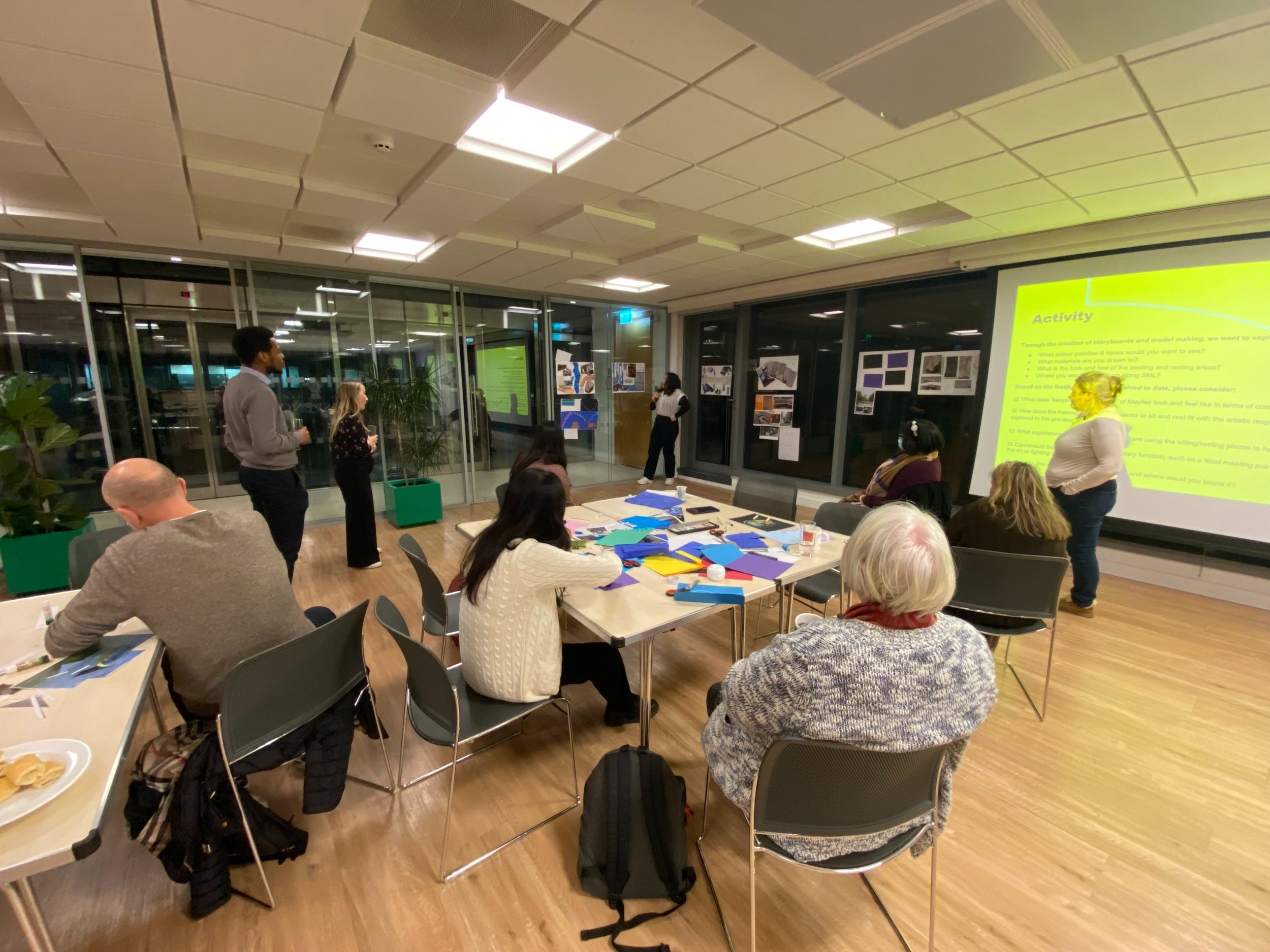
South Molton Triangle
Public Art
Project
Shaping Public Art with Communities
Client
Grosvenor
Project Team
BDP
Location
Mayfair, Central London
Sharing public art with communities requires a creative approach, especially in an area as rich in history as South Molton Triangle. From the legacy of William Blake to the hidden river Tyburn, we recognised the need to design an engagement strategy that incorporates this unique heritage.
We partnered with Grosvenor to design and facilitate a series of creative engagement workshops focused on the South Molton Triangle Public Art Strategy. These workshops engaged the local community and stakeholders to envision the future of this significant area.
The South Molton Triangle is set to become a premier destination for retail, dining, leisure, and office spaces, serving as a dynamic gateway into Mayfair. This development will continually evolve, enhancing its international appeal.
Over several months, we conducted bespoke workshops to explore the principles and themes for public art in South Molton Lane, an area rich in history and cultural significance. These sessions allowed the community to voice their visions for the future of this iconic location.
We designed the workshop series to explore four overarching themes: Precedence & Context, The Lost River Tyburn, Framing Landscapes, and artist and poet William Blake.
Each workshop employed various art forms to create an engaging space for discussion and debate, centered on the role of art in the public realm.

“The participatory approach was very good. With good facilitators.”
Workshop Attendee
SETTING THE SCENE
The first workshop was designed to set the tone for the entire series. We shared information about the topics we would explore in each session and highlighted the areas where stakeholders could influence the public art strategy. Participants were asked to respond to and comment on precedent images displayed around the room. These images were developed using BDP’s early research and design ideas for potential interventions and materiality, as well as examples from around the world that aligned with the emerging culture and public art principles outlined in the planning application.
Participants initially responded to the images without any accompanying text describing the artwork or its location. This approach aimed to determine whether participants felt that public art needed descriptive text to provide context.
THE LOST RIVER
The Lost River Tyburn runs beneath South Molton Lane, and we aimed to understand how participants wanted public art to acknowledge, inform, and celebrate this hidden historical feature.
In this workshop, we explored two creative mediums: soundscapes and lighting, derived from the emerging principles of the South Molton Triangle Public Art and Cultural Strategy. We collaborated with a young artist and sound engineer from our network to delve into the concept of soundscapes and their use in public spaces. This exploration took place in room one, providing participants with an immersive experience of how sound can enhance the public realm.
FRAMING LANDSCAPES
Building on the insights from previous workshops, we aimed to understand the desired look and feel for the seating and explore what "keeping the area true to Mayfair and Grosvenor" meant to participants.
We tasked each participant with creating a visual mood board using a varied material palette we provided. Participants selected the materials and color palettes they wanted to see reflected in the seating and artwork. We also included some of the precedent images from workshop one. This exercise in creating mood boards brought a rich variety of ideas to life, showcasing diverse perspectives and preferences.
WILLIAM BLAKE
William Blake, an English poet, painter, and printmaker, was largely unrecognized during his lifetime but is now considered a seminal figure in Romantic Age poetry and visual art. He has a historical connection to South Molton Lane, having once resided at 17 South Molton Lane, marked by a Heritage England blue plaque on the house's front.
In our workshop, we introduced participants to William Blake, sharing details and examples of his work as an artist, poet, illustrator, and printer. We focused on understanding participants' priorities for celebrating Blake, particularly in relation to the proposed Art Wall. Later, we explored various ways to honor Blake and his legacy within the location at 17 South Molton Lane.
All insights gathered from these discussions were compiled into a comprehensive report, including conclusions and recommendations for integrating William Blake's influence into the public art strategy.




